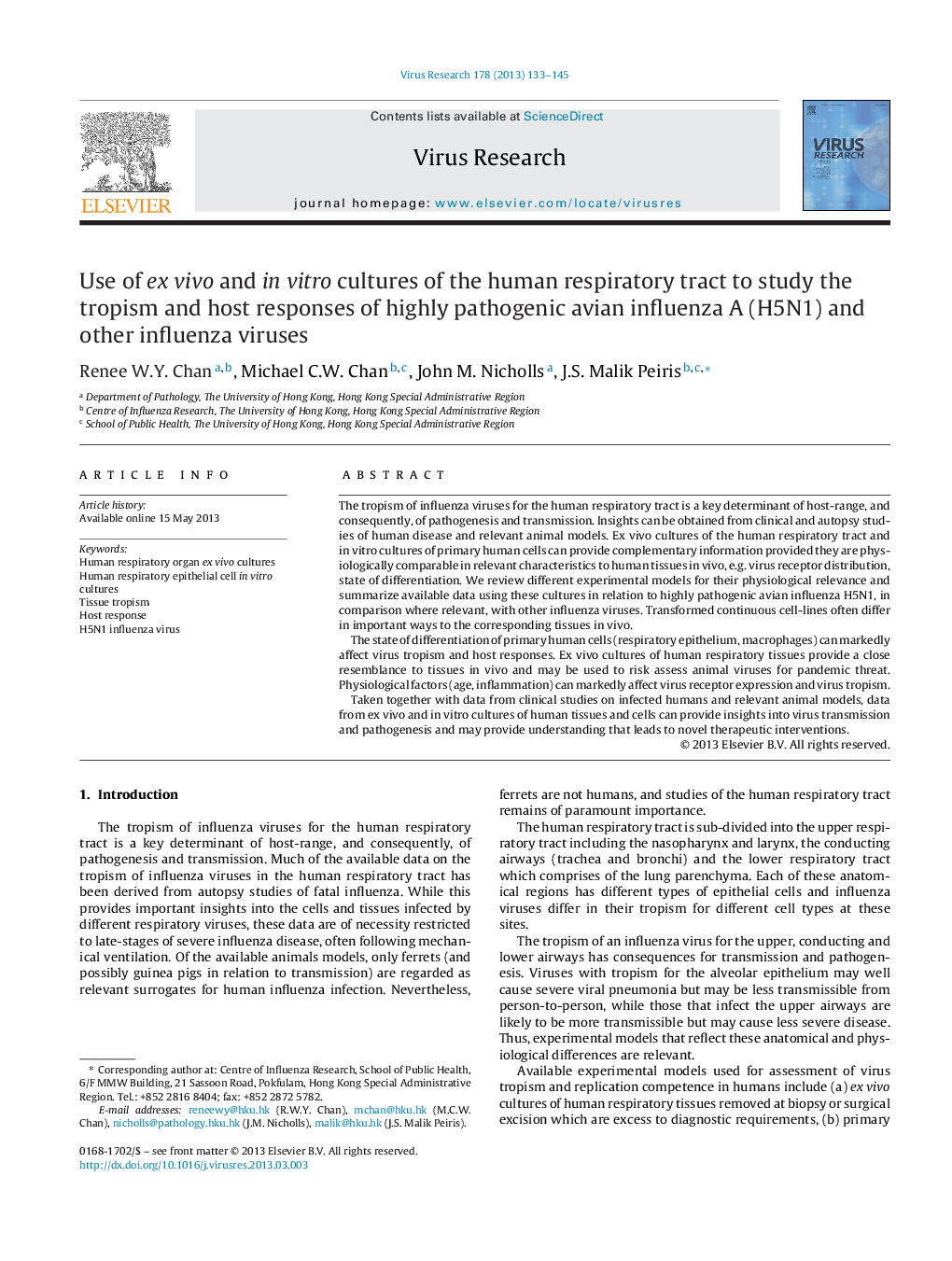| کد مقاله | کد نشریه | سال انتشار | مقاله انگلیسی | نسخه تمام متن |
|---|---|---|---|---|
| 3428547 | 1228207 | 2013 | 13 صفحه PDF | دانلود رایگان |

• Sialic acid expression in ex vivo organ cultures correlates with in vivo tissues.
• Ex vivo cultures can be used to study innate immune response to flu infection.
• Ex vivo cultures can be used to study virus tropism.
• Ex vivo cultures are useful for risk assessing animal viruses.
The tropism of influenza viruses for the human respiratory tract is a key determinant of host-range, and consequently, of pathogenesis and transmission. Insights can be obtained from clinical and autopsy studies of human disease and relevant animal models. Ex vivo cultures of the human respiratory tract and in vitro cultures of primary human cells can provide complementary information provided they are physiologically comparable in relevant characteristics to human tissues in vivo, e.g. virus receptor distribution, state of differentiation. We review different experimental models for their physiological relevance and summarize available data using these cultures in relation to highly pathogenic avian influenza H5N1, in comparison where relevant, with other influenza viruses. Transformed continuous cell-lines often differ in important ways to the corresponding tissues in vivo.The state of differentiation of primary human cells (respiratory epithelium, macrophages) can markedly affect virus tropism and host responses. Ex vivo cultures of human respiratory tissues provide a close resemblance to tissues in vivo and may be used to risk assess animal viruses for pandemic threat. Physiological factors (age, inflammation) can markedly affect virus receptor expression and virus tropism.Taken together with data from clinical studies on infected humans and relevant animal models, data from ex vivo and in vitro cultures of human tissues and cells can provide insights into virus transmission and pathogenesis and may provide understanding that leads to novel therapeutic interventions.
Journal: Virus Research - Volume 178, Issue 1, 5 December 2013, Pages 133–145